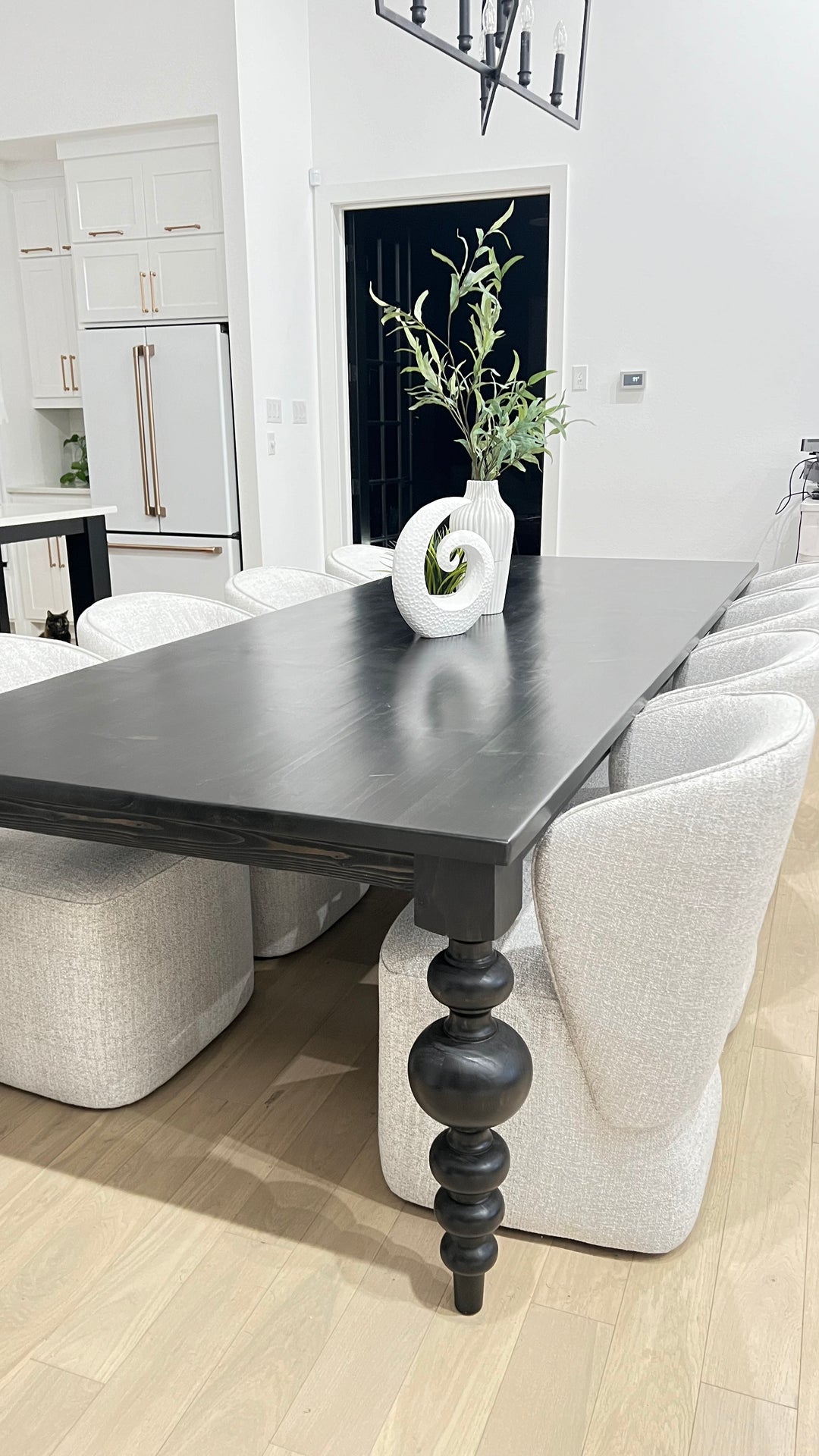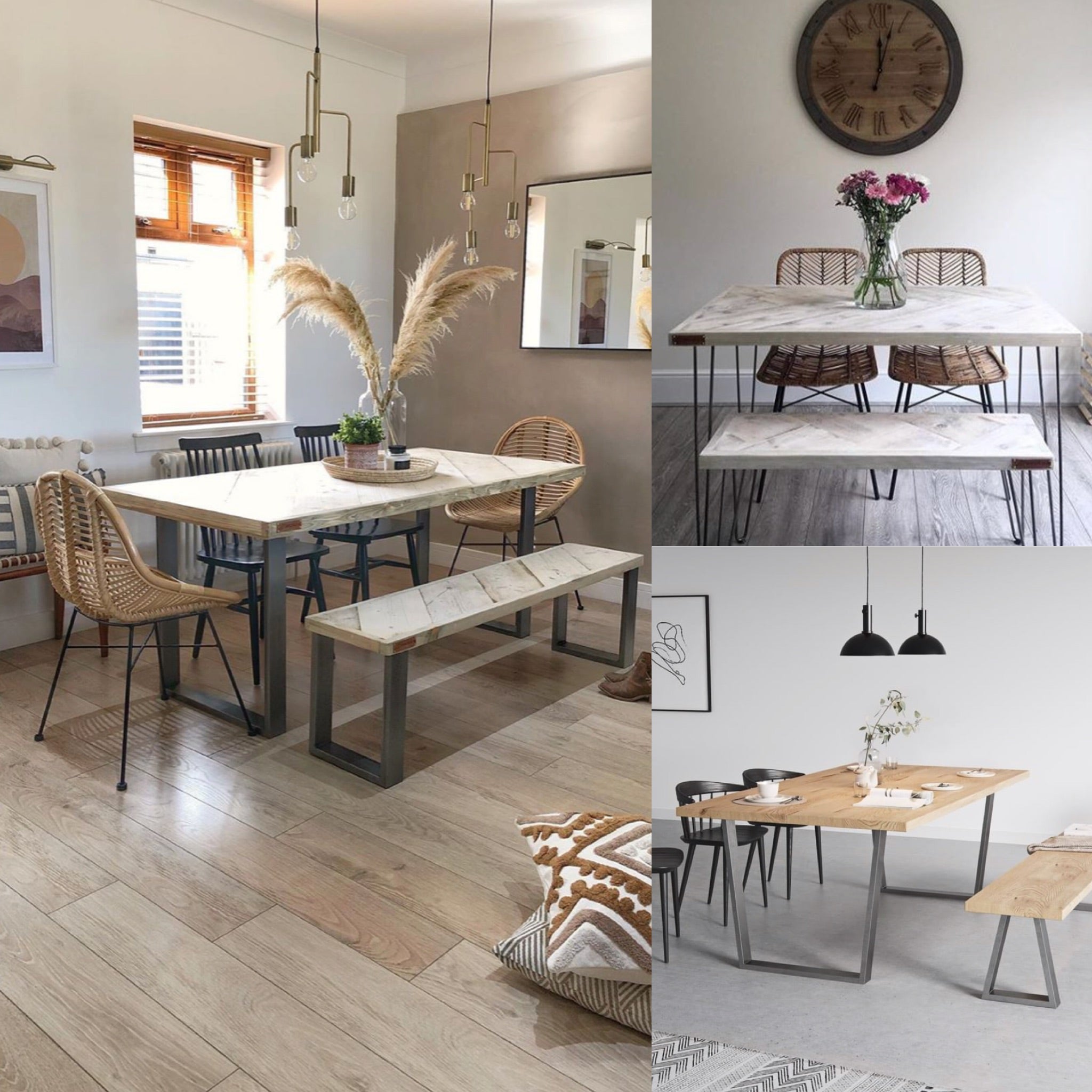Tips for Installing Dining Room Table Legs for a Modern Look
Tips for Installing Dining Room Table Legs for a Modern Look
Blog Article
From Standard to Modern: Find the Perfect Eating Area Table Legs for Your Design
While traditional layouts such as cabriole and turned legs stimulate a feeling of ageless refinement, modern styles like hairpin and geometric options provide a possibility for striking visual rate of interest. As you consider these aspects, the inquiry continues to be: just how can you seamlessly incorporate these diverse leg designs to produce a harmonious eating experience?
Understanding Table Leg Styles
The range of dining-room table leg designs can dramatically affect both the aesthetic appeals and performance of the room. Each leg style contributes distinct visual elements and functional attributes, providing to diverse layout choices and use demands. Recognizing these designs is critical for picking the appropriate table that aligns with your general interior style vision.
As an example, tapered legs provide a clean, classic appearance that can boost a room's elegance, while stand bases offer security and take full advantage of legroom, making them excellent for smaller sized areas. Hairpin legs, a characteristic of mid-century modern-day layout, present an industrial style, enabling an airy, open feel. Similarly, trestle legs evoke rustic appeal, providing robust support and a feeling of timelessness.
In addition, the selection of materials plays a significant duty. Wood legs can bring warmth and structure, whereas steel choices often share a streamlined, contemporary ambiance. Ultimately, recognizing table leg styles is necessary for developing a cohesive dining location that shows individual style while making certain functionality and convenience. By thoughtfully considering these aspects, you can improve both the aesthetic and useful charm of your eating space.
Standard Table Leg Options
When choosing eating space table legs, conventional options commonly personify timeless beauty and workmanship. These layouts reflect a rich heritage and a dedication to top quality, making them perfect for those that value traditional aesthetics.
One of the most renowned typical leg styles is the cabriole leg, characterized by its graceful curved shape. This layout frequently includes ornamental carvings and is most generally found in Queen Anne and Chippendale furnishings. One more prominent alternative is the turned leg, which boasts a series of smooth, rounded shapes that give a classic look while maintaining stability.
Furthermore, the straight leg, while straightforward, uses a basic and strong structure that can mix seamlessly with a selection of tabletop designs. For those attracted to ornate outlining, claw-and-ball feet legs evoke a sense of splendour and can offer as a magnificent centerpiece in any eating room.
Last but not least, stand bases, although not strictly legs, offer an alternate conventional option that enables sufficient legroom and can be perfectly sculpted. Each of these standard leg styles adds to the general ambiance of an eating room, weding function with visual allure.

Modern Table Leg Layouts
Modern table leg layouts use a diverse series of styles that emphasize tidy lines and cutting-edge materials. These designs typically focus on capability while working as striking prime focus within a dining space. Minimalist appearances are common, with legs crafted from products such as metal, glass, and crafted wood, which add to a modern and airy feel.
One prominent style is the barrette leg, characterized by its slender, conical structure that gives security without overwhelming the tabletop (dining room table legs). This design is often found in mid-century modern-day furnishings and can effortlessly see this here match different table shapes. An additional trend is the use of geometric forms, where legs may tackle angular or asymmetrical types, including visual interest and a touch of artistry

Mixing Designs for One-of-a-kind Rooms
Commonly, homeowners seek to create unique eating areas that show their personal style by mixing numerous design aspects. This method permits the consolidation of diverse looks, resulting in a harmonious yet distinctive setting. As an example, coupling a rustic wood table with sleek, modern metal legs can develop a captivating comparison that elevates the area's general appeal.
In addition, incorporating vintage table legs with contemporary table tops can stimulate a feeling of background while maintaining a modern perceptiveness. Such combinations not just showcase individual taste but likewise encourage creativity, allowing home owners to curate an area that really feels both personal and welcoming.
Color plays a vital function in this mixing process; anonymous choosing table legs that complement or contrast with the existing color system can enhance aesthetic interest. For instance, whitewashed legs can soften the daring of a dark table surface, creating a well balanced aesthetic.
Tips for Choosing the Right Legs
Choosing the right table legs is essential for accomplishing both functionality and visual charm in your eating room. Begin by taking into consideration the total design of your room. Standard setups take advantage of legs that feature detailed carvings or transformed layouts, while contemporary rooms might call for streamlined, minimalist designs.
Next, evaluate the height and stability of the legs. dining room table legs. Conventional dining tables vary in between 28 to 30 inches in height, so make sure the legs enhance this measurement for comfort. Furthermore, robust products, such as hardwood or steel, can boost stability and longevity
Assess the leg form too-- options include straight, tapered, or pedestal styles. Straight legs offer a traditional appearance, while conical legs can add a touch of elegance. Pedestal bases supply adequate legroom and are perfect for smaller rooms.
Verdict
In summary, choosing the excellent dining-room table legs calls for careful factor to consider of both contemporary and traditional designs. Standard options such as cabriole and transformed legs use timeless elegance, while modern-day designs like hairpin and geometric shapes supply a contemporary touch. By harmonizing leg style, elevation, and product with the total decoration, a cohesive and welcoming atmosphere can be accomplished. Ultimately, the selected table legs need to show the wanted visual, boosting the eating experience within the room.
The range of dining space table leg styles can dramatically affect both the appearances and capability of the area. Ultimately, recognizing table leg designs is important for creating a natural dining area that reflects personal design while guaranteeing practicality and convenience.One of the most iconic typical leg styles is the cabriole leg, identified by its stylish bent shape. Straight legs use a classic appearance, while tapered legs can include a touch of style.In summary, choosing the suitable eating space table legs calls for careful consideration of both modern-day and traditional designs.
Report this page